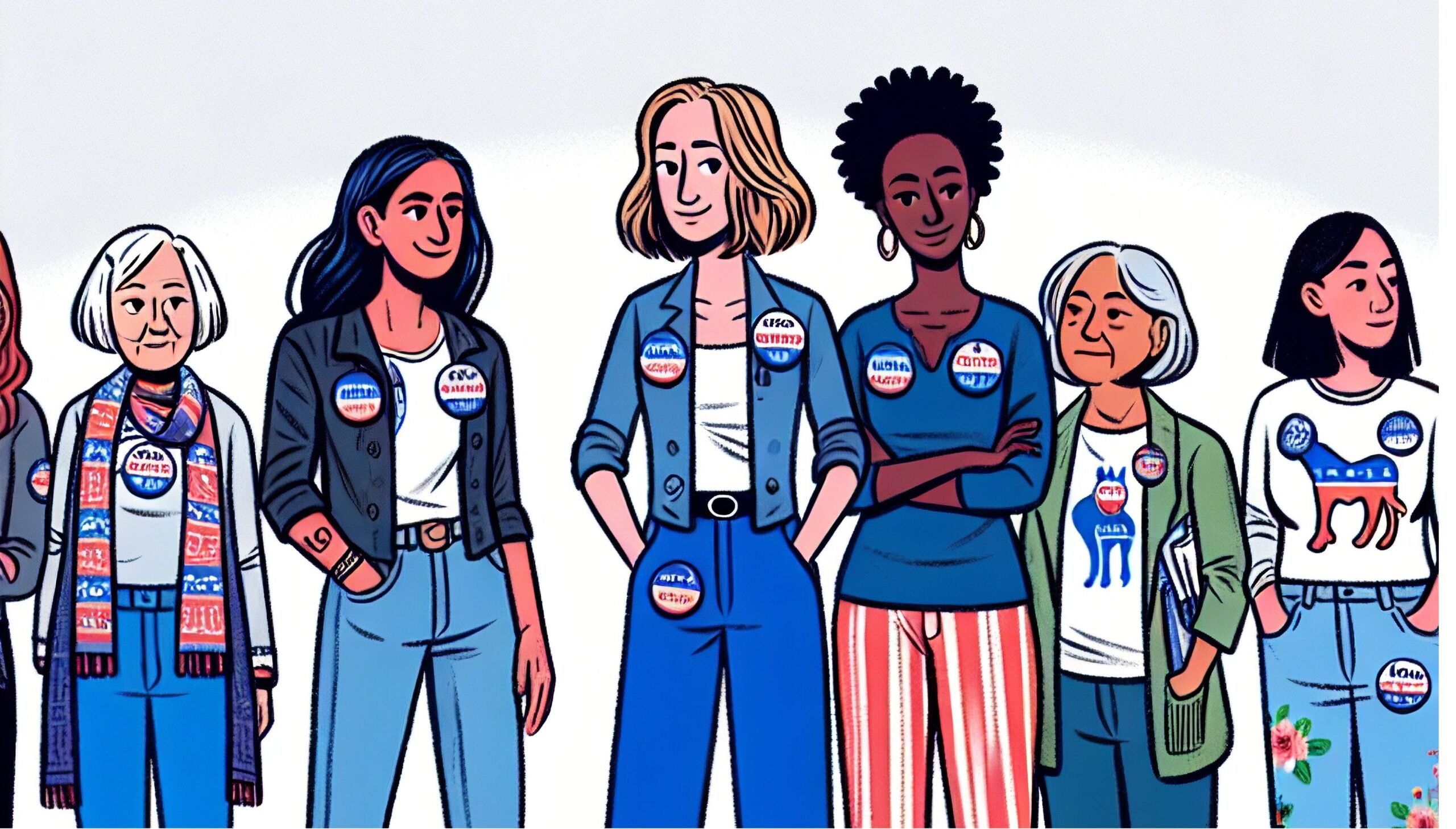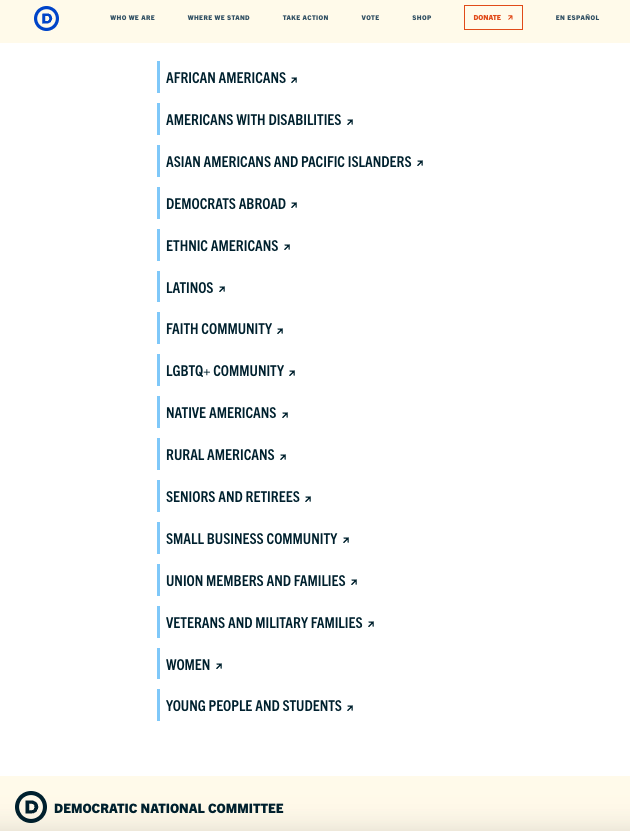Newsletter May 2, 2024
Have Democrats Given Up on Men?

In a recent interview with New York Times columnist Maureen Dowd, Democratic tactician James Carville lamented his party’s refusal to appeal to male voters:
If you listen to Democratic elites—NPR is my go-to place for that—the whole talk is about how women, and women of color, are going to decide this election. I’m like: ‘Well, 48 percent of the people that vote are males. Do you mind if they have some consideration?’
Not everyone appreciated the sentiment. In an op-ed for The Hill, Anna Greenberg responded that the party was right to focus on women. She wrote, “Carville may not like it, but the Democratic Party is the women’s party. Sixty percent of self-identified Democrats are women.”
It’s an important debate for Democrats to have, but Carville and Greenberg are talking past each other. This is not simply an argument about demographics. Democratic affiliation in the US has long had a lopsided gender makeup. Gallup polling shows that women have made up roughly 60 percent of the party since at least the late 1990s. What has changed is the type of women who identify as Democrats. A 2022 report from the Survey Center on American Life found that college-educated women are a growing and influential part of the party base, comprising 30 percent of the party, more than twice their share in 1998 (13 percent).
Political analysts regularly argue that the changing educational makeup of the Democratic Party is largely responsible for its leftward shift. The New York Times’s Nate Cohn made precisely this argument in a past column. He wrote:
As they’ve grown in numbers, college graduates have instilled increasingly liberal cultural norms while gaining the power to nudge the Democratic Party to the left. Partly as a result, large portions of the party’s traditional working-class base have defected to the Republicans.
But it’s not simply that Democrats are overrepresented with BAs, PhDs, and JDs. College-educated women have distinctive views on many cultural questions, especially on issues of reproductive health, LGBT rights, and gender equality. A 2023 survey found that 44 percent of college-educated men said that the US has made progress towards “giving women equal rights to men” over the past decade, but only 28 percent of college-educated women agreed. Instead, college-educated women were far more likely to say women had lost ground than gained it.
These divergent perceptions are reflected in the party’s priorities. The Democratic Party’s website includes a section about the various constituencies it represents. In the “Who We Serve” section, the DNC’s website identifies sixteen different demographic groups that the party represents. It’s a comprehensive list, with one exception. Can you guess which demographic group representing roughly half of the voting population is not included?

It’s difficult to believe that the exclusion of men from this list is simply an oversight. Rather, the omission of men reflects a broader divide in how partisans view the state of women and men in America today. A fascinating survey found a stark political divide between liberals and conservatives over whether boys or girls are most in need of help to become successful. Conservatives were far more worried about how boys were faring in American society than girls. Liberals, conversely, expressed greater concern about girls than boys.
If anything, this political divide in views about the state of men vs. women is more pronounced among younger Americans. Eighty-seven percent of younger Democratic women believe that women in the US face at least some discrimination in American society, but only 25 percent believe men face discrimination. Older Democratic women are more likely to say that men experience discrimination in American society. Meanwhile, younger Republican men are more likely to say men experience discrimination (47 percent vs. 36 percent).
In part, the Democratic Party’s single-gendered advocacy reflects longstanding commitments and priorities. It’s been roughly a decade since the Democratic Party introduced the slogan, “The War on Women,” in response to Republican policies restricting access to abortion. In a post-Roe world, this message certainly resonates with left-leaning women, but far less so with men.
An electoral strategy focused mostly if not exclusively on the challenges women face entails significant risk. A new poll conducted by Harvard University’s Institute of Politics (IOP) tracked a substantial slide in Democratic identity among young men. In the latest poll, the partisan attachments of young men are split—roughly as many identify as Republican (29 percent) as Democrat (32 percent). This is an extraordinary turnabout. Five years earlier, IOP polling found that young men were more than twice as likely to identify as Democratic as Republican (42 percent vs. 20 percent).
My own research has shown much the same shift in partisan affiliation among young men. But the declining Democratic attachment is not connected to a dramatic ideological transformation. There’s simply not much evidence that young men have become much more conservative. On issues such as climate change, gun control, and abortion, they are still well to the left of older men. My own theory is that young men prioritize cultural questions far less than young women, especially college-educated young women. On the issues they do care about, such as inflation, the cost of housing, and the availability of good jobs, they do not believe either party is representing their interests. It’s one reason why so many young men have a negative view of both parties.
What does it all mean for the 2024 election? If young women do not view Biden any more positively than young men, they at least generally believe he’s far better than Trump on the issues they care about. John Della Volpe’s polling shows Biden has the largest advantage over Trump on three issues: gender rights, LGBTQ rights, and abortion rights. These are all issues that young women care more about than young men. A lot more.
For this reason, I feel confident that Biden will recover among young women voters in 2024, but I’m less certain about how he will fare with young men. The Harvard Youth Poll shows a sizable gender divide in 2024 vote preference. Sixty-three percent of young female voters say they are supporting Biden compared to only half (50 percent) of young men. Put another way, Biden has a 33-point advantage over Trump among young women, but only a six-point advantage among young men. That’s astounding, but perhaps not surprising.
Plenty of Americans who will end up voting in 2024 have yet to pay close attention to the campaign. Biden may well rebound among young men, but it’s hardly a foregone conclusion. Looking beyond the 2024 election, Gen Z men may find that they have more in common politically with Gen X and Baby Boomer men than with the women of their own generation. The political and cultural ramifications would be considerable. But that’s a story for another time.








